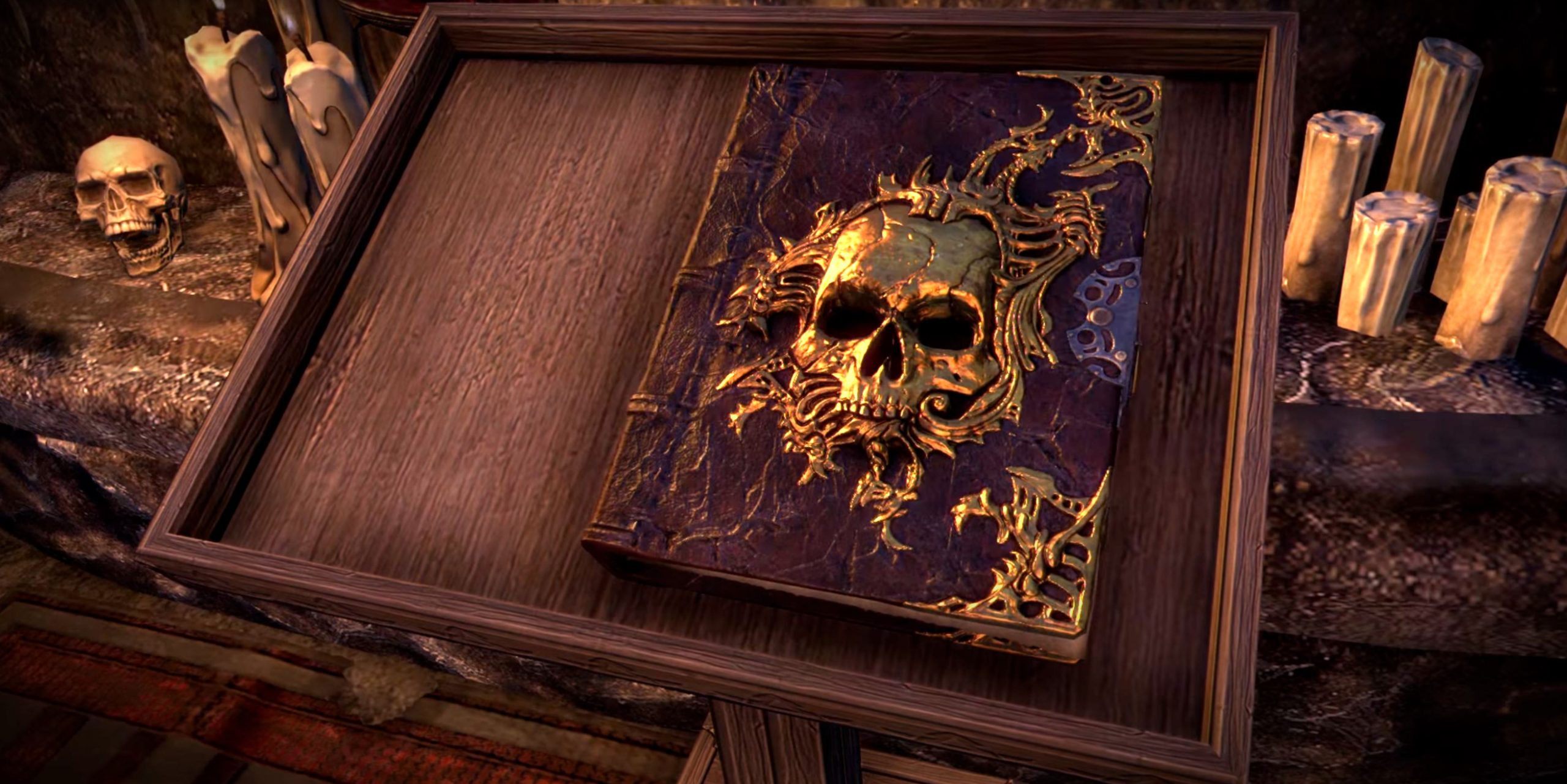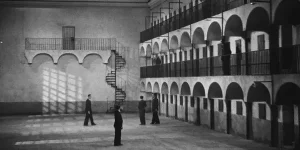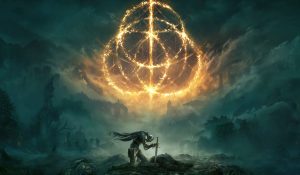
Bethesda and Todd Howard present The Elder Scrolls, a (mostly) high fantasy exploration of the land of Tamriel and the planes beyond. Running since 1994’s Arena, which preceded Howard, and breaking a little more into the mainstream with Daggerfall (where Howard was a designer), the franchise is a force to be reckoned with in the genre of open-world RPGs. Despite how easy it is to tease Howard for his big talk, there’s still nothing quite like Skyrim, or its predecessors, all of which present you with a blank slate of a character. From there, it’s their fate to become a whole lot more. If you want them to be, that is.
Tamriel is also home to some of the wildest, weirdest plot threads in fiction, with that mostly above doing some heavy lifting. Science fiction elements thread underneath the magic, from Dwemer clockworks to the Battlespire, functionally a spaceship-slash-space station. But more pervasive are the strangest, spookiest, and downright grotesque corners of Tamriel, offered up by eldritch Daedric Princes and simple human monstrosity. There’s a lot of that, and we now present some of the best samples this side of Stephen King.
Hail Sithis!
Everybody loves Hermaeus Mora. Hermie’s a chatty ball of tentacles with a credit line at Barnes & Noble. While the Prince of Knowledge is comprehensible for a Lovecraftian horror, there’s one truly eldritch force at work in Tamriel that certainly isn’t. Only the Argonians openly revere the primordial being known as Sithis, understanding that his dominion is the void itself.
Despite repeated snake imagery, there’s no known incarnation of Sithis. He’s not even a Daedra. He simply is chaos, inherent to the empty void. He’s something beyond death, yet it’s the various assassin guilds, including the Dark Brotherhood, who worship him by offering death to others. Even here, it’s possible that it’s actually Mephala they’re serving. And Sithis, entropy itself, does not care. Yeeegh!
Soul Traps and The Soul Cairn
The truth of spiritual existence in Tamriel is made clear every time someone does a Necromancer quest or goes after Azura’s Star. The souls of living beings can be made tangible, used to fuel magic, destroyed, or, if you’re very lucky, actually make it to your culture’s vision of the afterlife. The truth of the Black Soul Gems is eternally grim, with its victims locked within the Soul Cairn, subject to the whims of the Ideal Masters (necromancers made eternal, first seen in Battlespire).
‘Lesser’ souls fuel more ordinary gems, which means anything, even a chicken, has a living spirit that can be casually consumed for power. All dogs go to heaven? Not if your fancy new fire sword has anything to say about it. You monster.
Where Did the Dwemer Actually Go?
One of the great unsolved mysteries of Tamriel is how every Dwemer (save one, Morrowind’s Yagrum Bargarn) suddenly vanished during the Battle of Red Mountain. Although the Dwemer were combatants, it’s not certain that the battle itself had anything to do with the event. It’s possible it’s because they were trying to build a machine god, Numidium. The only enduring theory is that the Dwemer’s chief architect, Kagrenac, was fooling around with the heart of the lost god, Lorkhan, and something he did made his people whiff into the night, leaving only ash behind.
It’s a theory that’s supported by an easily missed side quest in Skyrim in which Mage Guild member Arniel Gane asks you to retrieve one of Kagrenac’s tools. In the quest’s finale? He vanishes, too.
The Forgotten Crypts
For pure exploration buffs, The Elder Scrolls Online can’t be matched. The sheer variety laid out before players is already immense, and growing all the time. Yet some of those zones are scarier and more dangerous than others. Tucked away in southern Morrowind are the Forgotten Crypts. It’s a public dungeon, which means that you’re probably not alone in there, at least, and it features one of the grimmest side-quests in the game.
The Dark Elf Sela is looking for her lost husband, and no good answers are waiting for her in the refugee camp. Her partner found out the terrible secret of the camp’s survival — cannibalism, instead of risking a plague — and if you make the wrong choice, Sela’s their next meal. They’ll even tell you about her flavor profile, if they get to her.
Space Isn’t Real
Skyrim features a beautiful nighttime skybox, filled with light and color (especially if you’re using a mod to tune it up a bit). But you’re not looking at space. In Tamriel, you’re never looking at space. At least not the way we think of it.
All that darkness is just the sphere of reality and unreality (called the Aurbis) holding Mundus — your mortal plane — together. Those heavenly bodies are just as likely to be hellish, for they’re what’s visible of the Planes of Oblivion. Yup, you can theoretically see Mehrunes Dagon’s horrific realm from that bucolic waterfall you’re standing by. Even the moons are places you can and will visit at some point, underlining that nothing about Tamriel is a standard fantasy realm. Not even its idea of reality is sane. Their Gods are pretty iffy too.
Jyggalag
Sheogorath is a lot of fun, until you remember that not all of his quirks are cute and that he’s capable of the deadliest jokes in existence. But there’s a side of him that’s much worse, and that’s Prince Jyggalag, whose domain is Order itself.
Jyggalag, whose implacable Greymarch threatens the existence of Oblivion’s Shivering Isles at the end of every era, is uninventive, humorless, and the embodiment of mathematical perfection. His pursuit of perfect order is so relentless that all the other Princes temporarily put their beefs with each other aside to focus all their hate on this guy, bringing forth Sheogorath and creating the cyclical era of madness and order the Isles are now trapped in. To stop it, your character will become Sheogorath themselves. By the time of Skyrim, the Hero of Kvatch is subsumed utterly by his madness.
The Vile Manse
Another ESO location of spooky repute is a Colovian mansion in the bucolic Reaper’s March border-region of Valenwood and Elsweyr. Don’t worry, it’s not the area’s bloody history of war that marks the Vile Manse! It’s the insane necromancer deep inside, who’s turned the cellar into a thin veil between reality and Hermaeus Mora’s domain. Visit it at night, with your sound up. You won’t thank me later.
The madman is, of course, after Mora’s Daedric Artifact, the Oghma Infinium. It’s not going well for him, so he’s happy to take it out on you. After enjoying everything this public dungeon has to offer, note the underground exit: it goes to an Ayleid Ruin, which allows for some upsetting implications, considering everything else those guys were up to.
Moon Sugar, Moon Spice
It’s weird and intriguing that being born under a mix of moon phases shapes every Khajiit into one of the varying “furstocks” we meet and can play as. From the human-passing Ohmes of Arena to the “oh-my-god-let-me-kiss-your-widdle-forehead” housecat-sized Alfiq, these possibilities make the Khajiit my favorite race in The Elder Scrolls. But it’s also frankly terrifying that being born under the wrong phase can also predispose a Khajiit towards corruption, reborn into something terrible: the dro-m’Athra.
These shadowy, blue-lit unfortunates are lost souls, Bent Cats pulled to the Dark Heart of Lorkhaj. Their gods turn against them, leaving them trapped in the service of Namira, the Prince of Darkness. Creeping out on moonless nights, they’re an unkillable threat that no true Khajiit will speak of (unless there’s full light and a need to warn somebody).
Numidium
One possible key to the disappearance of the Dwemer lies in the Machine God they attempted to make. Numidium, capable of breaking reality in the way a nuke breaks an atom, does stride across the land shortly after when Emperor Tiber Septim (later known as the deified Talos) uses it to finish the conquest of Tamriel. It’s an act that changes history and sees Tiber’s eventual ascension. Later, in the course of Daggerfall, Uriel Septim VII has the massive golem rebuilt and its god-heart replaced with the Mantella gem. The result shatters reality.
Numidium’s existence is at the heart of a lot of ‘maybes’ and one of those maybes is that it is pulled together by an Oversoul. In this case, that is a spiritual unity created by the Dwemer as they shed their organic forms and became… this.
The Dragon Breaks
Numidium’s causal destruction is enhanced by the developers deciding that every ending of Daggerfall is both canon and happening at the same time. That results in an event called The Warp of the West also known as a Dragon Break, because Akatosh, as the Draconic god of Time, sees his temporal rules chucked out the window.
Each faction of Daggerfall wound up with its own understanding of events. In the wake of the natural disasters and temporal madness that followed, dozens of small kingdoms found themselves reshaped into a mere four, all loyal to the Empire. This isn’t the only circumstance where time cracked, either, and you’re lucky you only deal with a small, looped Time Wound in Skyrim. The longest Break stretched over a millennia, as the Middle Dawn saw multiple young Gods fighting to tell origin stories, and the nature of Tamriel’s reality is to listen to them all. You think the timey-wimey Vex in Destiny are hellish to figure out.
The Snow Elf to Falmer Pipeline
Skyrim re-introduces the threads of some grim Elvish history in its base game, then makes the horror of those events plain during the return of the Dawnguard. The Snow Elves and their fate are first hinted at by the Skaal back in the Morrowind era, but it’s still an unpleasant shock to find these stunted, Gollum-like creatures in Skyrim’s caves and mechanical ruins, only to learn they were once a society equal to the Altmer.
As the Nords ate away at their territory, the majority of the Snow Elves turned to the Dwemer, their iffy allies, for rescue. The Dwemer allowed them to take refuge in their cities, but they had to be blinded. Eventually they were ground down into a slave race to their ‘rescuers,’ and left aimless and mad after the Dwemer vanished. By the time of Skyrim, it seems even their souls have degraded into animalism. They fill common white gems, instead of the necromantic black gems, and the last surviving Snow Elf looks on them with sorrow.
Maybe the Only Good Ayleid Is a Dead Ayleid
Plundering an Ayleid ruin is probably one of your earliest rites of passage in Oblivion. After all, there’s one right across the river when you get out of prison. No living Ayleids are around to stop you from taking all the goodies out of these gleaming white tombs, just gobs of undead and the occasional mortal threat. Good, because the Ayleids weren’t discriminating about their Daedric worship, and this often led to some of the worst outcomes a society had to offer.
Remnants of slave journals tell of Ayleid leaders who, fond of the darkest arts of the Daedra, replicated the bloody sculptures of Oblivion with their thralls’ internal organs. Contemporaries of Saint Alessia, herself formerly a slave, even tell of setting children on fire for sport. Yeah, there’s one Ayleid ghost-king that makes himself useful in ESO, but you know what? Screw the Ayleids.
The post The Elder Scrolls’ Scariest Lore Secrets appeared first on Den of Geek.





